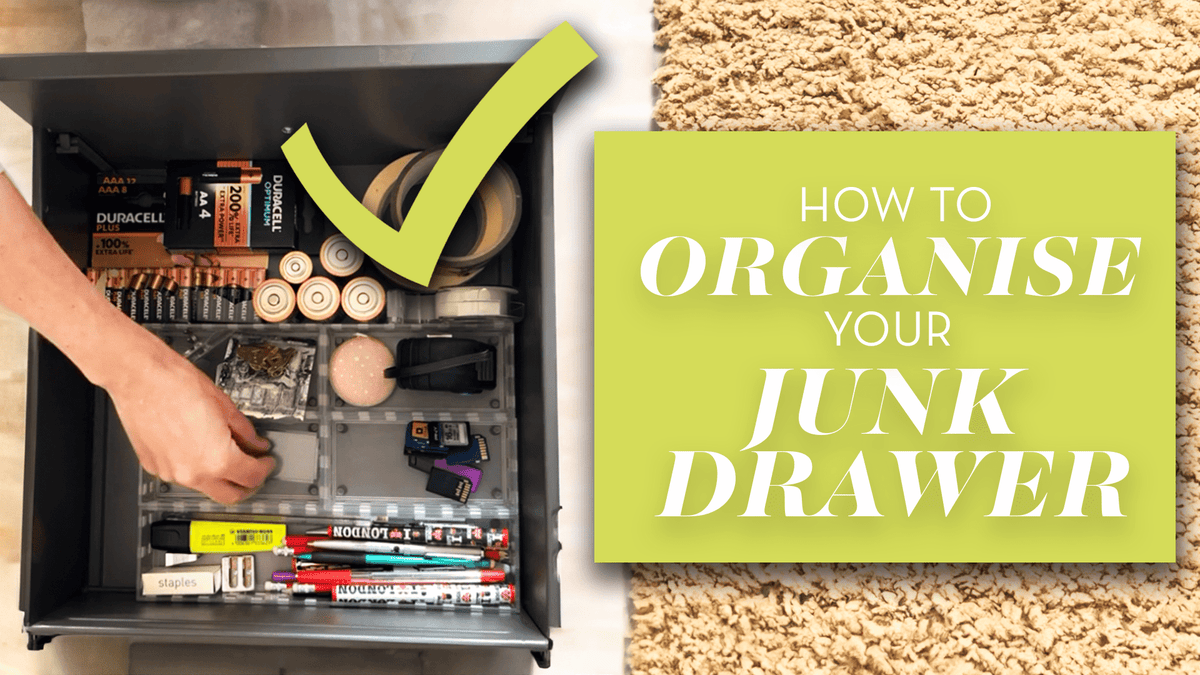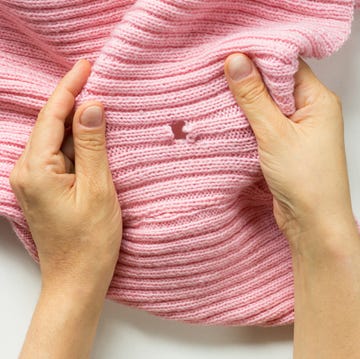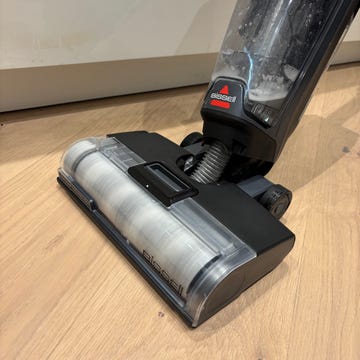Unwanted smells can build up all over the home; be it in the bathroom, kitchen or bedroom. But one space that tends to pong more than most, is the washing machine.
You’ve probably faced this smell at one point or another. It happens because you’ve got the perfect environment for bacteria to grow, thanks to the residual moisture and lack of ventilation.
Before you know it, there’s a disgusting musty smell coming from the drum that just won’t go away. What’s worse, it can even transfer over to your clothes, leaving them smelling like they need to be washed all over again!
Luckily there are ways to put a stop to this smell once and for all – in fact, we’ve rounded up 9 solutions here.
1. Use a washing machine cleaner
Cleaning the washing machine is the first solution most of us resort to. But this involves more than wiping out the rubber seal. Start by running a proprietary cleaner through the washing machine, such as Dr Beckmann’s Service It Deep Clean Washing Machine Cleaner. You should be running a cleaner through your washing machine every 3-6 months to remove dirt and bacteria.
2. Descale the pipes
You’re not quite done with cleaning the internals of your washing machine. While you might not factor it in at first, limescale can take a toll on a smelly machine too. If it builds up enough, it can create blockages and opportunities for soap scum and bacteria to grow. Washing machine cleaners don’t always remove limescale, so you will need to check this and use a specific descaler if necessary, such as Calgon 4 in 1 Washing Machine Cleaner. Keep in mind that if you’re using extra detergent to compensate for hard water (which forms the limescale), this problem can build up more quickly.
3. Drain the filter
As part of deep cleaning your washing machine, you should drain and unblock the filter. This can be found behind a panel on the front of the machine, beneath the drum. It’s a fiddly and disgusting process if you’ve never done it before. It can smell pretty awful because you've got stagnant water trapped in here breeding bacteria.
To drain the washing machine’s filter, you should refer to the manual. For general guidance (or if you can’t find the manual), start by switching off the machine. Some modern washing machines feature a small drain hose behind the filter panel which you can simply point and gradually drain into a bowl, stopping and starting as needed. But if you’ve got an older machine, you may have to unscrew the filter directly to drain it.
This is a messy (and smelly) process, so place some towels beneath and grab a very shallow bowl. Carefully and gradually unscrew the filer until the water starts to drain. You might need to tighten it again to empty the bowl so be patient. Once it’s finally drained, you can remove the filter and dispose of any blockages. Then scrub with warm water before replacing. Give the filter housing a wipe with a damp microfibre cloth to remove any visible debris from here too.
You should be draining and checking the filter around once a month going forward to clear any blockages, so the smell shouldn’t be so bad next time!
4. Remove mould
If you’ve got mould around the rubber seal, wipe it away with a solution of diluted bleach on a microfibre cloth and leave to dry. Wait for it to fully dry before running another cycle or else it could dye your clothes.
Remove and wash the mould from the detergent drawer too using an old toothbrush or an electric cleaning brush to reach into the crevices. If you’re dealing with stubborn residue, leave it to soak in warm, soapy water before you start scrubbing. You might need to give the detergent drawer housing a quick scrub too; the electric cleaning brush can really help here. Make sure the washing machine is switched off first.
5. Change your habits
To keep your washing machine smelling fresh, the first step is to discourage bacterial growth. One way to do this is to remove residual moisture after each wash. Once the washing is out, run a dry microfibre cloth over the inside of the window and inside the rubber seal. Any puddles or condensation will be a major contributor to bacterial growth.
You’ll also want to leave both the door and detergent drawer open after use to help it air dry. Even if it’s open just a crack, this can help to air not just the drum, but the internal components as well. If you’re concerned about children or pets around an open washing machine, there are locks available to hold it in place.
Finally, it sounds like common sense, but don’t leave washing sitting in the drum for longer than necessary, and that’s the case whether it’s wet or dry. If laundry if left sitting in the machine, it’s essentially blocking the ventilation, and whether it’s wet or just soiled, it’s encouraging bacterial growth. So ideally you’ll want to load the washing machine only once it’s ready to run, and unload it as soon as you can once the cycle finishes. Setting an alarm on your phone can help if you often miss the alert on the machine.
The delay start is the exception to leaving dry laundry in the drum – this will only be for a limited amount of time, and it avoids wet laundry sitting in there, which is much worse! Just don’t use the washing machine as a laundry basket until it’s full enough to run!
6. Don’t overload
We want to get the most out of every wash. But whatever you do, don’t overload the drum. An overloaded drum won’t be able to wash properly; the detergent can’t distribute across the load, the clothes won’t agitate and it likely won’t be able to spin either. The result is a ball of wet, musty clothes sitting in the drum, contributing to the smell and dirt within the machine. Fill to no more than ¾ full to ensure an effective wash.
7. Don't overdo the detergent
Another bad habit is using too much detergent. You may have seen this for yourself if you’ve ever spotted a few bubbles sitting on the seal at the end of the cycle.
Too much detergent won’t be fully rinsed away in the rinse cycle, which means soap suds are left sitting in the pipes. This is another recipe for smelly bacterial growth, so watch how much detergent you use. You should always consider the hardness of your water as well as the level of soiling.
8. Cycle selection
We’re all encouraged to use lower temperature washes these days to save energy, money and do our bit for the environment. But, you should know that lower temperature washes won't kill bacteria. This includes the popular quick wash cycle, which often doesn’t give the machine enough time to fully remove the detergent either.
Powder detergent in particular, will struggle to dissolve at lower temperature cycles too, so you could be contributing to blockages here.
That means there’s more soap suds and bacteria left behind which encourages smells. In other words, the more lower temperature or quick wash cycles you use, the more vulnerable your washing machine is to bacterial growth and smells. Of course, you don’t need to stop using these cycles. Running a service wash, or an empty wash at 60 degrees or higher, once a month will be enough to clear the pipes of any fresh soap suds.
9. Blocked waste pipe
If the smell still persists after trying all of the above, it’s worth checking the pipes at the back of the machine. Make sure the machine is switched off at the wall and you have help before attempting to move this appliance. The waste water hose may need unkinking to allow the water to flow freely. Failing that, you might be dealing with a blockage and it’s worth calling in a professional to help.





















